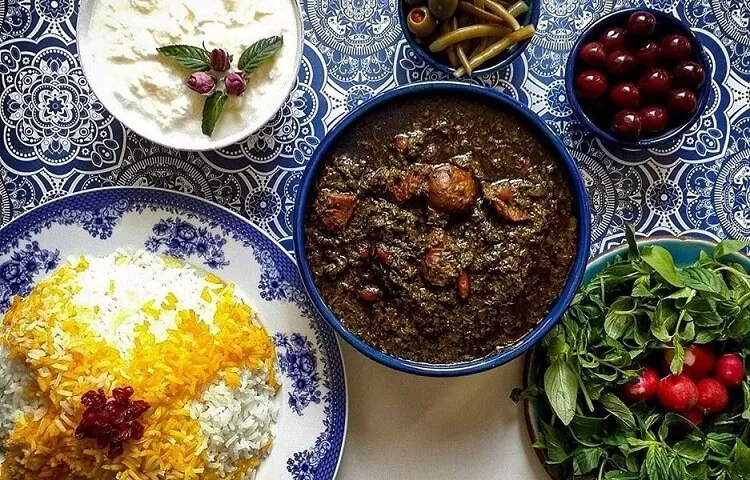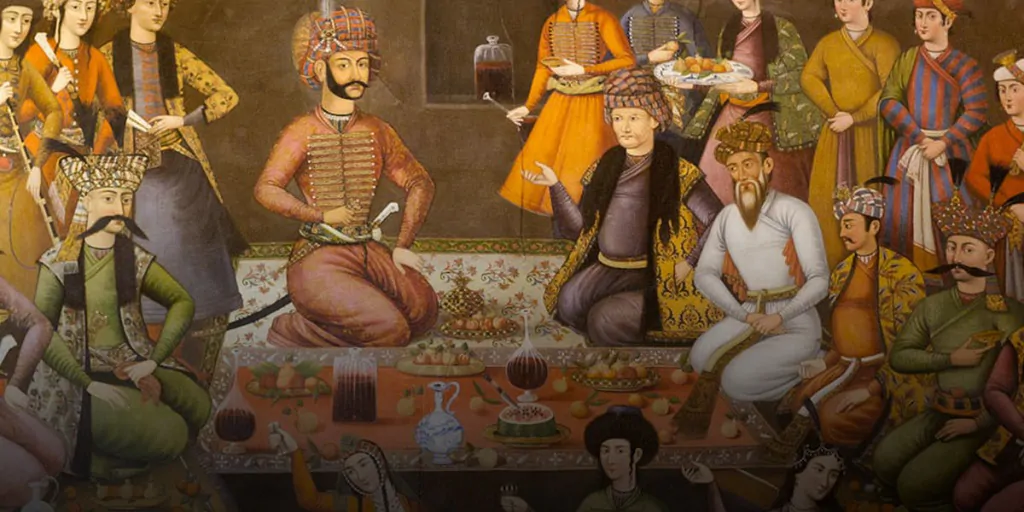One of the key components in the development of food tourism is the promotion of local foods. Using local Iranian food by restaurants is crucial to promote Iranian food and establish joint relationships with local producers.
This alternative also leads to an increase in domestic production and an improvement in their investment return situation. For restaurants that use Iranian food, the food on their menu creates a marketing opportunity, and the menu potentially leads to continued purchases of Iranian food. As a tourist destination, Iran has great potential in the field of food tourism development in the world. This destination has a great heritage in local food production, production techniques and diverse culinary resources. This article analyzes managers’ willingness and ability to use and promote local Iranian food in the restaurant menu.
The Role of Iranian Restaurants in Promoting Iranian Food
Iranian restaurants play a significant role in promoting Iranian food by offering a platform for people to experience Iran’s authentic flavors and culinary traditions. These restaurants serve as cultural ambassadors, introducing customers to traditional Iranian dishes, such as kebabs, stews, and rice dishes. By providing a welcoming and immersive dining experience, Iranian restaurants not only satisfy the taste buds of their customers but also educate them about the rich history and cultural significance of Iranian cuisine. Through their menus, decor, and ambience, these restaurants create an environment reflecting Iranian culture’s warmth and hospitality. Overall, Iranian restaurants contribute to the global recognition and appreciation of Iranian food, helping to preserve and promote this delicious and diverse culinary heritage.
Promoting Iranian food in the world
Promoting Iranian food worldwide is an important endeavor involving various strategies and efforts. Culinary events and festivals are one effective way to promote Iranian food globally. These events provide an opportunity to showcase Iranian cuisine’s diverse flavors and unique dishes to a wider audience. Collaborating with international chefs and restaurants can also help introduce Iranian flavors to different culinary scenes worldwide.
Another approach is through digital platforms and social media. Creating engaging content, such as videos, recipes, and articles, can help raise awareness about Iranian food and its cultural significance. Sharing these materials on social media can reach a broader audience and generate interest in trying Iranian dishes.
Collaborations with tourism organizations and travel agencies can also play a role in promoting Iranian food. By including culinary experiences and food tours in travel packages, visitors can have the chance to explore Iranian cuisine firsthand and develop a deeper appreciation for it.
Lastly, government support and initiatives can contribute to promoting Iranian food. Governments can support the global promotion of Iranian cuisine by encouraging the establishment of Iranian restaurants abroad, providing resources for culinary training, and participating in international food exhibitions.
Combining culinary events, digital platforms, collaborations, and government support can help effectively promote Iranian food worldwide and increase its recognition and appreciation.

The most famous Iranian dishes in restaurants around the world
Several famous Iranian dishes have gained popularity in restaurants around the world. Here are a few examples:
- Kebabs: Iranian kebabs, such as koobideh (ground meat kebab) and joojeh (chicken kebab), are widely recognized and loved. These grilled meat skewers are often served with saffron-infused rice and grilled tomatoes and onions.
- Ghormeh Sabzi: This is a traditional Iranian stew made with herbs, kidney beans, and tender chunks of meat (usually lamb or beef). It is known for its rich flavors and aromatic herbs like parsley, cilantro, and fenugreek.
- Fesenjan: Fesenjan is a unique and flavorful dish made with chicken or duck, pomegranate molasses, and ground walnuts. It has a sweet and tangy taste and is often served with rice, adding a delightful contrast of flavors.
- Tahchin: Tahchin is a savory rice cake made with layers of fragrant saffron rice and marinated chicken or meat. It is typically baked until it forms a crispy golden crust and is served with yogurt or a side salad.
- Ash Reshteh: Ash Reshteh is a hearty and comforting Persian noodle soup. It is made with various herbs, legumes, and noodles, creating a flavorful and nutritious dish enjoyed on special occasions.
These are just a few examples of the famous Iranian dishes in restaurants worldwide. Each dish represents the rich culinary heritage of Iran and offers a unique and delicious dining experience.

The position of Iranian restaurants in the world
Iranian restaurants hold a unique position in the world culinary scene. They serve as ambassadors of Iranian culture, offering a taste of the country’s rich and diverse cuisine to people from different backgrounds. Iranian restaurants allow individuals to experience the authentic flavors, spices, and cooking techniques of Iranian food.
In many countries, Iranian restaurants have gained popularity and have become go-to destinations for those seeking a taste of Persian cuisine. These establishments often showcase many traditional Iranian dishes, such as kebabs, rice dishes, and aromatic stews. By offering various vegetarian and non-vegetarian options, Iranian restaurants cater to different dietary preferences and ensure that there is something for everyone to enjoy.
Moreover, Iranian restaurants contribute to cultural diversity by adding a unique flavor to the local culinary landscape. They provide an alternative dining experience, introducing customers to new flavors and expanding their culinary horizons. Through their menus, decor, and ambience, Iranian restaurants create an immersive environment that reflects the warmth and hospitality of Iranian culture.
Additionally, Iranian restaurants play a role in promoting cross-cultural understanding and appreciation. They are meeting places where people from different backgrounds can come together, share a meal, and learn about Iranian traditions and customs. It fosters a sense of cultural exchange and helps break down stereotypes and misconceptions.
Overall, Iranian restaurants hold a special place in the world’s culinary scene, offering a gateway to the vibrant and flavorful world of Iranian cuisine. They contribute to cultural diversity, promote cross-cultural understanding, and provide a delightful dining experience for individuals seeking to explore the tastes and traditions of Iran.

Food tourism in Iranian restaurants
Food tourism in Iranian restaurants offers a unique opportunity for travelers to explore the rich culinary heritage of Iran. Iranian restaurants play a crucial role in attracting food enthusiasts from around the world eager to experience the authentic flavors and cultural traditions of Iranian cuisine.
Food tourists visiting Iranian restaurants can indulge in traditional dishes like kebabs, rice dishes, and aromatic stews. These restaurants often prioritize using high-quality ingredients and traditional cooking techniques to ensure an authentic dining experience. Iranian restaurants offer a delightful culinary journey from the fragrant saffron-infused rice to the tender and flavorful grilled meats.
Moreover, Iranian restaurants often provide a warm and inviting ambience that reflects Iran’s hospitality and cultural nuances. The decor, music, and attentive service create an immersive experience for food tourists, allowing them to savor the delicious food and immerse themselves in the cultural atmosphere.
Food tourism in Iranian restaurants also offers an opportunity for cultural exchange. Visitors can engage with restaurant staff, learn about the history and significance of the dishes, and gain insights into Iranian culinary traditions. This exchange of knowledge and experiences fosters a deeper appreciation for Iranian food and culture.
Overall, food tourism in Iranian restaurants allows travelers to explore the diverse and flavorful world of Iranian cuisine. It allows them to embark on a culinary adventure, discover new flavors, and create lasting memories while experiencing Iranian restaurants’ warmth and hospitality.



















